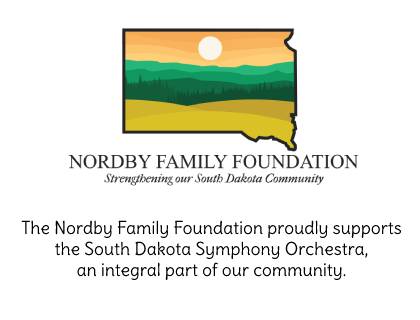Prelude and Liebestod
Born
May 22, 1813, Leipzig
Died
February 13, 1883, Venice
Instrumentation
Two flutes, piccolo, two oboes, English horn, two clarinets, bass clarinet, three bassoons, four horns, three trumpets, three trombones, tuba, timpani, harp, and strings
Duration
17 minutes
Composed
1858-59
World Premiere
The Prelude premiered in Paris as a concert excerpt in 1860. The opera itself premiered in Munich on June 10, 1865, both with Hans von Bülow conducting.
Something interesting to listen for:
The opening of this work is famous among musicians. It begins with a simple melody which culminates in a complex chord called a thirteenth chord. When you sort the notes of the chord out, it actually includes all the notes of a scale which makes it quite dissonant. The effect in Wagner's time was startling. Today, we hear intense tension which is gently released though not resolved. Then, as if we might have heard it wrong, Wagner does it again. He explores this tension and release. The effect feels almost as a sigh of deep despair, the endeavor not to give in to the sobs that are close. We are aware the story of the opera will be complex and hold heartbreak. As this concert excerpt progresses, we are immersed in the angst, but hope is also nearby in the beautiful instrumentation and the skill of tension and release in the choices of melody and harmony. By the end of the work, hope remains and comforts us despite the previous tension.
Program Notes
Written by Anna Vorhes
Richard Wagner changed music and even society in many ways. His career was not easy, nor was the acceptance of his talent universally recognized. By the time he reached the end of his work in Germany most of the art music world was divided into Wagnerians who supported him and applauded his innovation and anti-Wagnerians who believed he was ruining music. His personal beliefs and his private life did not make him easy to accept as a star either. Yet, his music rarely fails to move listeners and is treasured by performers. His place in music is complex.
This work comes from the middle of his career. He was not a young conductor and composer, and he had had difficulties with the German government heads due to his politics and his involvement with the Dresden insurrection. He was banished from his homeland and moved through other parts of Europe during this part of his life. He hoped to conquer Paris and its opera houses with a production of Rienzi. This was not to be. He began to build the Ring cycle and develop leitmotivs - short melodies to indicate characters and emotions - for the success of what would be a massive work. Then he began working on a setting of the Irish legend Tristan and Isolde. The work on that composition took place from 1856 - 1859.
The story of gallant knight Tristan going to escort the beautiful Isolde to become the bride of Tristan's much older uncle King Marke is full of the possibilities of unfulfilled love. Add Isolde's nurse who employs a love potion to ensure the connection between the young people and a disaster is ready to be presented. As the opera progresses, it is impossible for the young lovers to hide their passion. Tristan's friend and fellow knight, Melot, also falls in love with Isolde and betrays Tristan and Isolde to King Marke. The two knights fight, and Tristan is wounded. He is borne home to his own castle to try to recover. Isolde follows him and arrives just in time to witness Tristan's death. She is overcome. King Marke and Melot have followed, and the king reveals that he understands the love potion and is therefore willing to forgive the young lovers and allow them to be together. Isolde responds that they will only be together in death. Her aria describing this is the Liebestod of the title, though played in concert setting without a singer presenting the words.
In 1860, after Wagner had completed his work, he allowed Hans von Bülow to conduct the Prelude in Prague, with the conductor putting together an ending. In 1863 Wagner himself combined the Prelude and Liebestod for a concert in St. Petersburg. This concert pairing was performed other times over the next few years before Wagner secured a premiere of the opera itself. There were over seventy rehearsals in Vienna before the project of presenting the entire opera was abandoned, which led critics to call the opera unperformable.
King Ludwig II of Bavaria became a patron and supporter of Wagner, and a premiere of the opera was finally staged in Munich. Hans von Bülow conducted the first performance, despite the fact that his wife Cosima Liszt von Bülow and Wagner were openly in love. The bad luck that seemed to haunt the opera did not end. Ludwig Schnorr von Carlsfeld, the tenor who originated the role of Tristan, died unexpectedly after only four performances.
The concert version we hear tonight continues to be perhaps more popular and more frequently produced than the whole opera. It condenses the essence of the opera in less than twenty minutes of music. Wagner offered these program notes (as quoted by James Keller) when he presented the work in Vienna in 1863:
"Prelude (Liebestod): Taking on the role of suitor for his uncle, the king, Tristan brings to him Isolde. They love each other. From the most timid complaint of unquenchable longing, from the most delicate quivering, up through the most fearsome outburst confessing a hopeless love, the feeling here traces every phase of this hopeless struggle against inner passion, until, sinking back unconscious, that passion seems to be extinguished in death.
Concluding Movement (Transfiguration): And yet, that fate has kept apart in life now lives on, transfigured, in death: the gates to their union are open. Isolde, dying atop Tristan's body, perceives the blessed fulfillment of her burning desire: eternal union in measureless space, no bounds, no fetters, indivisible!"





